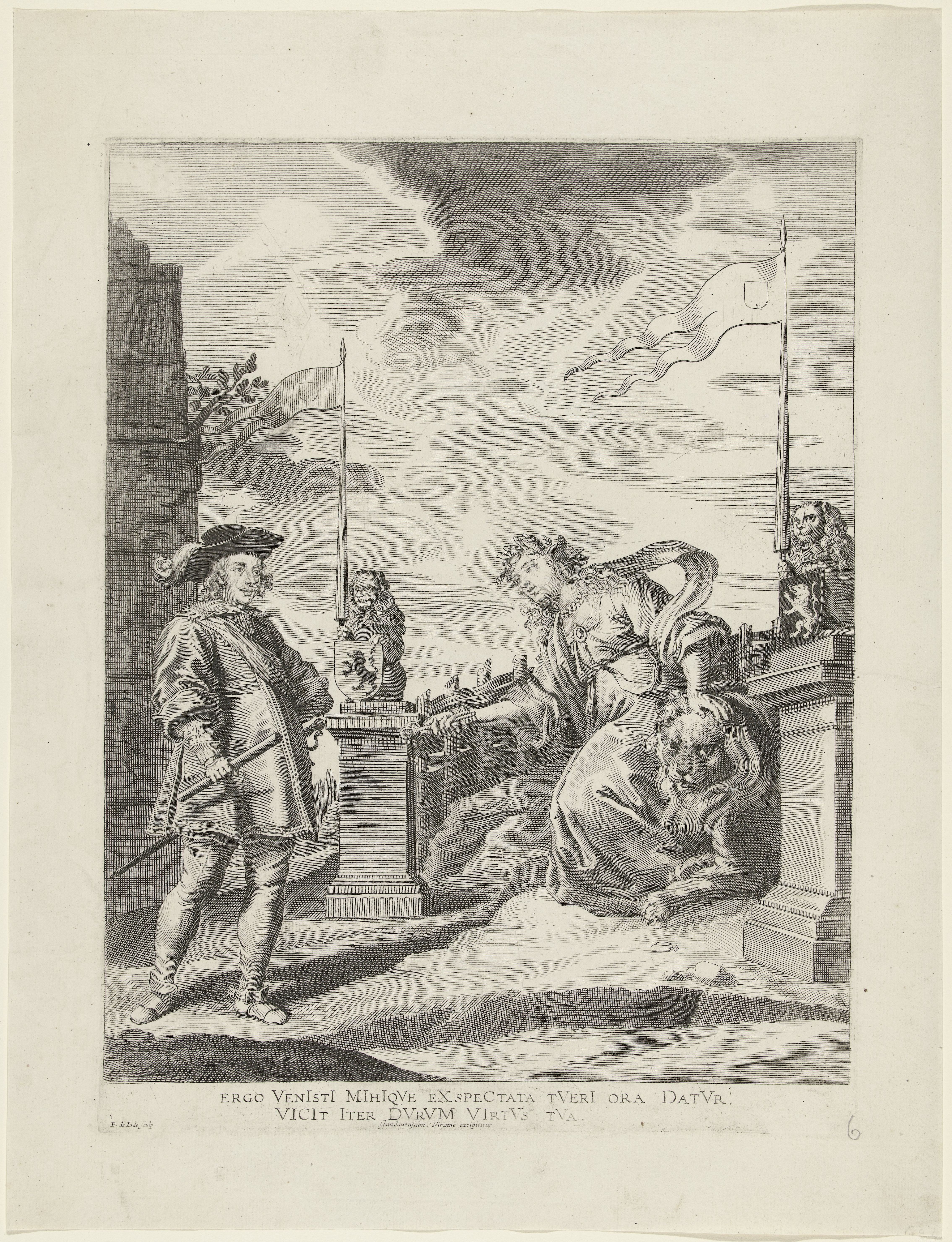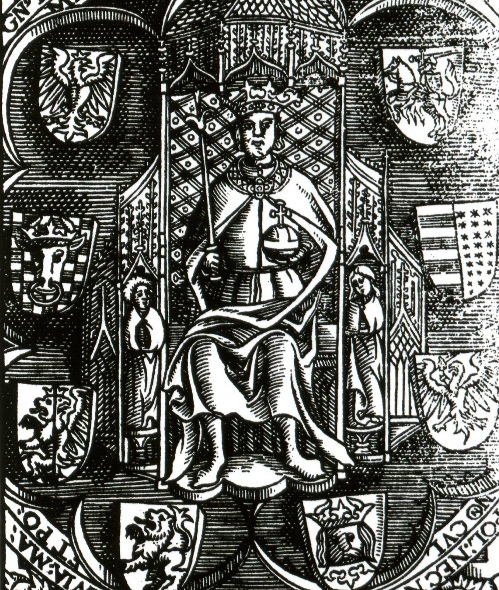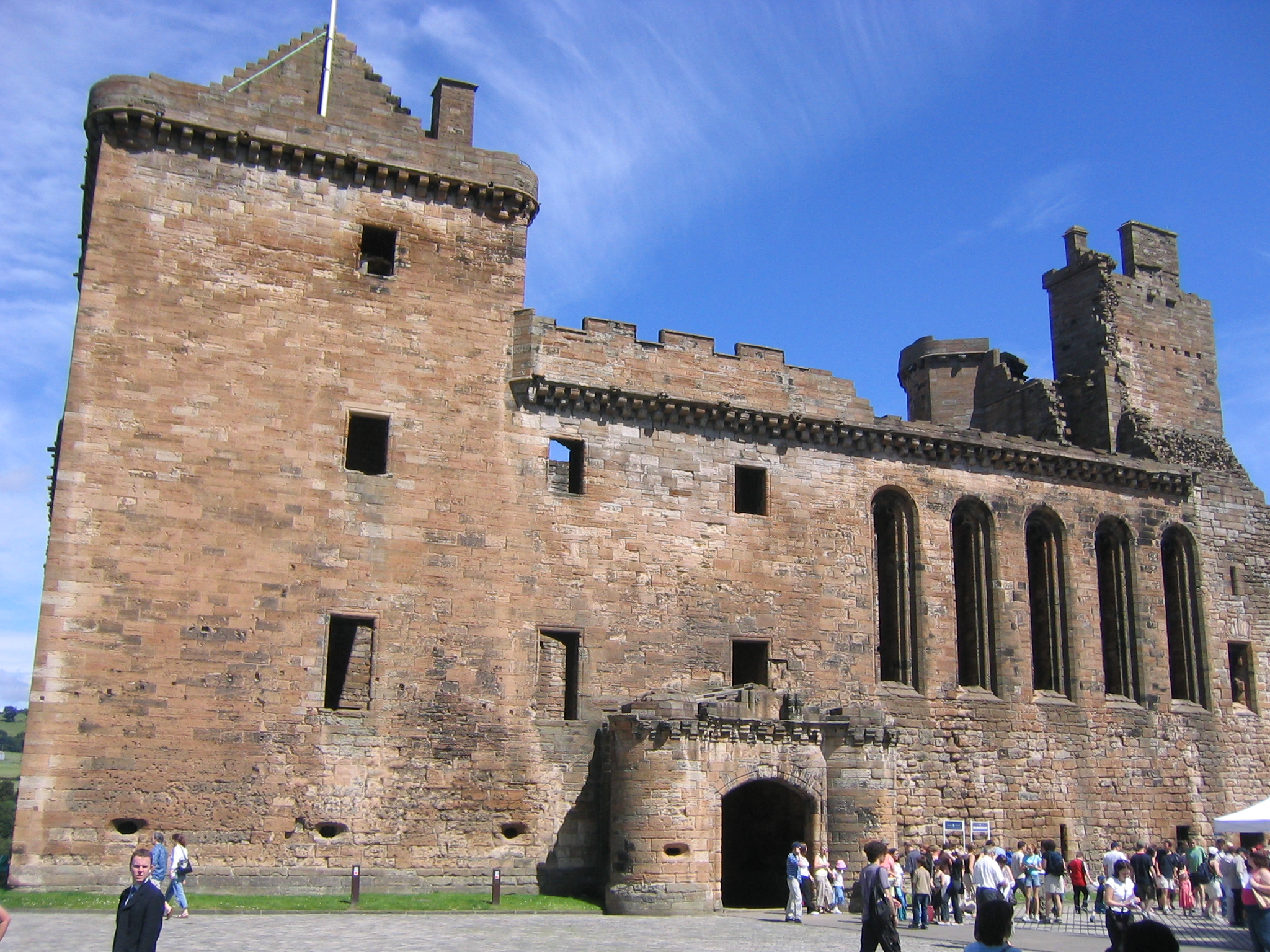|
Anselm Adornes
Anselm Adornes (8 December 1424 in Bruges – 1483 in Scotland), also known as Anselm Adorno, was a merchant, patron, politician and diplomat, who belonged to the fifth generation of the Adorno family, Adornes family to live in Bruges. Family Anselm was the son of Peter II Adornes and Elizabeth Brader Ickx. His ancestors were from Genoa. In the second half of the 13th century the family moved to Flanders: Opicius Adornes moved in 1269 when Count Guy of Dampierre arrived. His son Oppicius II (the younger) settled around 1300 in Bruges. The Adornes family was closely involved in international trade and in the administration of the city of Bruges. In 1443 Anselm married Margriet van der Banck (1427-1480) of Bruges, and they had sixteen children: * Jan Adornes (1444-1511), canon of Aberdeen and Lille * Elisabeth Adornes (1445-1453) * Margriet Adornes (b. 1448), kartuizerin in Sint-Anna-to-Woestijne * Maarten Adornes II (1450-1507), prior of the Carthusian monastery Genadedal * ... [...More Info...] [...Related Items...] OR: [Wikipedia] [Google] [Baidu] |
Portraits D'Anselme Adornes Et De Sa Femme
A portrait is a portrait painting, painting, portrait photography, photograph, sculpture, or other artistic representation of a person, in which the face is always predominant. In arts, a portrait may be represented as half body and even full body. If the subject in full body better represents personality and mood, this type of presentation may be chosen. The intent is to display the likeness, Personality type, personality, and even the mood of the person. For this reason, in photography a portrait is generally not a Snapshot (photography), snapshot, but a composed image of a person in a still position. A portrait often shows a person looking directly at the painter or photographer, to most successfully engage the subject with the viewer, but portrait may be represented as a profile (from aside) and 3/4. History Prehistorical portraiture Plastered human skulls were reconstructed human skulls that were made in the ancient Levant between 9000 and 6000 BC in the Pre-Pottery Ne ... [...More Info...] [...Related Items...] OR: [Wikipedia] [Google] [Baidu] |
Joyous Entry
A Joyous Entry (; ) is a ceremonial event marking the entry into a city by a monarch, prince, duke, or governor in parts of modern-day Belgium. Originating in the Middle Ages, it generally coincided with the affirmation or extension of the city's civic rights and privileges. Joyous Entries are primarily associated with the historic Duchy of Brabant and County of Flanders and continue in modern-day Belgium where the most recent Joyous Entries took place in 2013. The term is also occasionally used in relation to royal entries in Medieval France, Luxembourg, Hungary, Scotland, and elsewhere.Bell & Hawell Informat ... [...More Info...] [...Related Items...] OR: [Wikipedia] [Google] [Baidu] |
Triptych
A triptych ( ) is a work of art (usually a panel painting) that is divided into three sections, or three carved panels that are hinged together and can be folded shut or displayed open. It is therefore a type of polyptych, the term for all multi-panel works. The middle panel is typically the largest and it is flanked by two smaller related works, although there are triptychs of equal-sized panels. The form can also be used for pendant jewelry. Beyond its association with art, the term is sometimes used more generally to connote anything with three parts, particularly if integrated into a single unit. Etymology The word ''triptych'' was formed in English by compounding the prefix '' tri-'' with the word '' diptych''. ''Diptych'' is borrowed from the Latin , which itself is derived from the Late Greek () . is the neuter plural of () . In art The triptych form appears in early Christian art, and was a popular standard format for altar paintings from the Middle Ages onwa ... [...More Info...] [...Related Items...] OR: [Wikipedia] [Google] [Baidu] |
Paul Beneke
Paul Beneke, also Paul Benecke, (early 1400s (decade) – c. 1480) was a German town councillor of Danzig and a privateer who was associated with the Hanseatic League. Life During the Anglo-Hanseatic War, Beneke overpowered an English fleet at Zween in 1468. When Beneke was commissioned by Lübeck, head of the Hanseatic League, to captain the ship ''Peter von Danzig'', he chose to become part owner instead of taking pay. In 1473 in the North Sea, he followed and boarded the galley ''St. Matthew'', which had a registered owner's name of Tommaso Portinari, but was actually owned by England. It was bound for Italy. Beneke seized, amongst other items, Hans Memling's triptych ''The Last Judgment''. The painting had been commissioned for the chapel of a branch manager of the Medici Bank, Angelo Tani,A biography of Tani is provided with images of thLast Judgement Triptych (in the closed position)showing Tani and his wife as patrons. and included a head portrait of Portinari. Not surpr ... [...More Info...] [...Related Items...] OR: [Wikipedia] [Google] [Baidu] |
Casimir IV Of Poland
Casimir IV (Casimir Andrew Jagiellon; ; Lithuanian: ; 30 November 1427 – 7 June 1492) was Grand Duke of Lithuania from 1440 and King of Poland from 1447 until his death in 1492. He was one of the most active Polish-Lithuanian rulers; under him, Poland defeated the Teutonic Knights in the Thirteen Years' War and recovered Pomerania. The Jagiellonian dynasty became one of the leading royal houses in Europe. The great triumph of his reign was bringing Prussia under Polish rule. The rule of Casimir corresponded to the age of "new monarchies" in western Europe. By the 15th century, Poland had narrowed the distance separating it from Western Europe and became a significant power in international relations. The demand for raw materials and semi-finished goods stimulated trade, producing a positive balance, and contributed to the growth of crafts and mining in the entire country. He was a recipient of the English Order of the Garter (KG), the highest order of chivalry and the mos ... [...More Info...] [...Related Items...] OR: [Wikipedia] [Google] [Baidu] |
Lille
Lille (, ; ; ; ; ) is a city in the northern part of France, within French Flanders. Positioned along the Deûle river, near France's border with Belgium, it is the capital of the Hauts-de-France Regions of France, region, the Prefectures in France, prefecture of the Nord (French department), Nord Departments of France, department, and the main city of the Métropole Européenne de Lille, European Metropolis of Lille. The city of Lille proper had a population of 236,234 in 2020 within its small municipal territory of , but together with its French suburbs and exurbs the Lille metropolitan area (French part only), which extends over , had a population of 1,515,061 that same year (January 2020 census), the fourth most populated in France after Paris, Lyon, and Marseille. The city of Lille and 94 suburban French municipalities have formed since 2015 the Métropole Européenne de Lille, European Metropolis of Lille, an Indirect election, indirectly elected Métropole, metropolitan ... [...More Info...] [...Related Items...] OR: [Wikipedia] [Google] [Baidu] |
Brugge Jeruzalemkerk R01
Bruges ( , ; ; ) is the capital and largest city of the province of West Flanders, in the Flemish Region of Belgium. It is in the northwest of the country, and is the sixth most populous city in the country. The area of the whole city amounts to more than 14,099 hectares (140.99 km2; 54.44 sq. miles), including 1,075 hectares off the coast, at Zeebrugge (from , meaning 'Bruges by the Sea'). The historic city center is a prominent World Heritage Site of UNESCO. It is oval and about 430 hectares in size. The city's total population is 117,073 (1 January 2008),Statistics Belgium; ''Population de droit par commune au 1 janvier 2008'' (excel-file) Population of all municipalities in Belgium, as of 1 January 2008. Retrieved on 19 October 2008. of whom ... [...More Info...] [...Related Items...] OR: [Wikipedia] [Google] [Baidu] |
Linlithgow Palace
The ruins of Linlithgow Palace are located in the town of Linlithgow, West Lothian, Scotland, west of Edinburgh. The palace was one of the principal residences of the monarchs of Kingdom of Scotland, Scotland in the 15th and 16th centuries. Although maintained after Scotland's monarchs left for England in 1603, the palace was little used, and was burned out in 1746. It is now a visitor attraction in the care of Historic Environment Scotland. Origins A royal manor existed on the site from the 12th century. This was later enclosed by a timber palisade and outer fosse to create a fortification known as 'the Peel', built in 1301/2 by occupying English forces under Edward I of England, Edward I. The site of the manor made it an ideal military base for securing the supply routes between Edinburgh Castle and Stirling Castle. The English fort was begun in March 1302 under the supervision of two priests, Richard de Wynepol and Henry de Graundeston, to the designs of Master ... [...More Info...] [...Related Items...] OR: [Wikipedia] [Google] [Baidu] |
Forfar
Forfar (; , ) is the county town of Angus, Scotland, and the administrative centre for Angus Council, with a new multi-million-pound office complex located on the outskirts of the town. As of 2021, the town had a population of 16,280. The town lies in Strathmore, Angus and Perth & Kinross, Strathmore and is situated just off the main A90 road between Perth, Scotland, Perth and Aberdeen, with Dundee (the nearest city) being 13 miles (21 km) away. It is approximately 5 miles (8 km) from Glamis Castle, seat of the Bowes-Lyon family and ancestral home of Queen Elizabeth The Queen Mother, Queen Elizabeth the Queen Mother, and where the late Princess Margaret, Countess of Snowdon, Princess Margaret, younger sister of Elizabeth II, Queen Elizabeth II, was born in 1930. Forfar dates back to the temporary Scotland during the Roman Empire, Roman occupation of the area, and was subsequently held by the Picts and the Kingdom of Scotland. During the Scottish Wars of Independence, ... [...More Info...] [...Related Items...] OR: [Wikipedia] [Google] [Baidu] |
Order Of The Unicorn
Order, ORDER or Orders may refer to: * A socio-political or established or existing order, e.g. World order, Ancien Regime, Pax Britannica * Categorization, the process in which ideas and objects are recognized, differentiated, and understood * Heterarchy, a system of organization wherein the elements have the potential to be ranked a number of different ways * Hierarchy, an arrangement of items that are represented as being "above", "below", or "at the same level as" one another * an action or inaction that must be obeyed, mandated by someone in authority People * Orders (surname) Arts, entertainment, and media * ''Order'' (film), a 2005 Russian film * ''Order'' (album), a 2009 album by Maroon * "Order", a 2016 song from '' Brand New Maid'' by Band-Maid * ''Orders'' (1974 film), a film by Michel Brault * "Orders" (''Star Wars: The Clone Wars'') Business * Blanket order, a purchase order to allow multiple delivery dates over a period of time * Money order or postal order, a ... [...More Info...] [...Related Items...] OR: [Wikipedia] [Google] [Baidu] |
Scottish Parliament
The Scottish Parliament ( ; ) is the Devolution in the United Kingdom, devolved, unicameral legislature of Scotland. It is located in the Holyrood, Edinburgh, Holyrood area of Edinburgh, and is frequently referred to by the metonym 'Holyrood'. It is a democratically elected body and its role is to scrutinise the Scottish Government and legislate on devolved matters that are not Devolved, reserved and excepted matters, reserved to the Parliament of the United Kingdom. The Scottish Parliament comprises 129 members known as Members of the Scottish Parliament (MSPs), elected for five-year terms under the regionalised form of Additional-member system (MMP): 73 MSPs represent individual geographical Scottish Parliament constituencies and regions, constituencies elected by the Plurality voting system, plurality (first-past-the-post) system, while a further 56 are returned as list members from eight Additional-member system, additional member regions. Each region elects seven party-lis ... [...More Info...] [...Related Items...] OR: [Wikipedia] [Google] [Baidu] |
James III Of Scotland
James III (10 July 1451/May 1452 – 11 June 1488) was King of Scots from 1460 until his death at the Battle of Sauchieburn in 1488. He inherited the throne as a child following the death of his father, King James II, at the siege of Roxburgh Castle. James III's reign began with a minority that lasted almost a decade, during which Scotland was governed by a series of regents and factions who struggled for possession of the young king before his personal rule began in 1469. James III was an unpopular and ineffective king and was confronted with two major rebellions during his reign. He was much criticised by contemporaries and later chroniclers for his promotion of unrealistic schemes to invade or take possession of Brittany, Guelders and Saintonge at the expense of his regular duties as king. While his reign saw Scotland reach its greatest territorial extent with the acquisition of Orkney and Shetland through his marriage to Margaret of Denmark, James was accused of debas ... [...More Info...] [...Related Items...] OR: [Wikipedia] [Google] [Baidu] |







